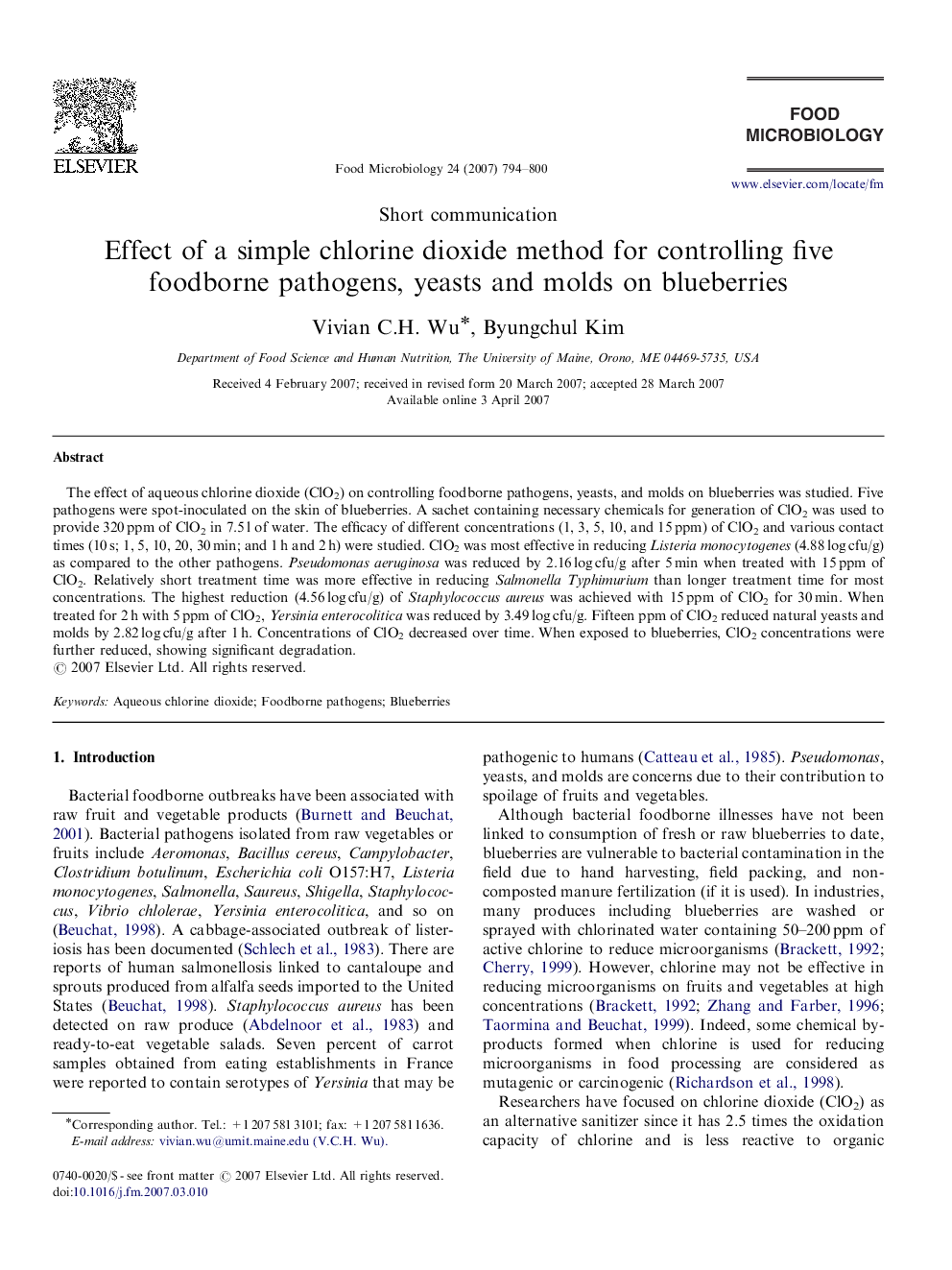| Article ID | Journal | Published Year | Pages | File Type |
|---|---|---|---|---|
| 4363689 | Food Microbiology | 2007 | 7 Pages |
The effect of aqueous chlorine dioxide (ClO2) on controlling foodborne pathogens, yeasts, and molds on blueberries was studied. Five pathogens were spot-inoculated on the skin of blueberries. A sachet containing necessary chemicals for generation of ClO2 was used to provide 320 ppm of ClO2 in 7.5 l of water. The efficacy of different concentrations (1, 3, 5, 10, and 15 ppm) of ClO2 and various contact times (10 s; 1, 5, 10, 20, 30 min; and 1 h and 2 h) were studied. ClO2 was most effective in reducing Listeria monocytogenes (4.88 log cfu/g) as compared to the other pathogens. Pseudomonas aeruginosa was reduced by 2.16 log cfu/g after 5 min when treated with 15 ppm of ClO2. Relatively short treatment time was more effective in reducing Salmonella Typhimurium than longer treatment time for most concentrations. The highest reduction (4.56 log cfu/g) of Staphylococcus aureus was achieved with 15 ppm of ClO2 for 30 min. When treated for 2 h with 5 ppm of ClO2, Yersinia enterocolitica was reduced by 3.49 log cfu/g. Fifteen ppm of ClO2 reduced natural yeasts and molds by 2.82 log cfu/g after 1 h. Concentrations of ClO2 decreased over time. When exposed to blueberries, ClO2 concentrations were further reduced, showing significant degradation.
